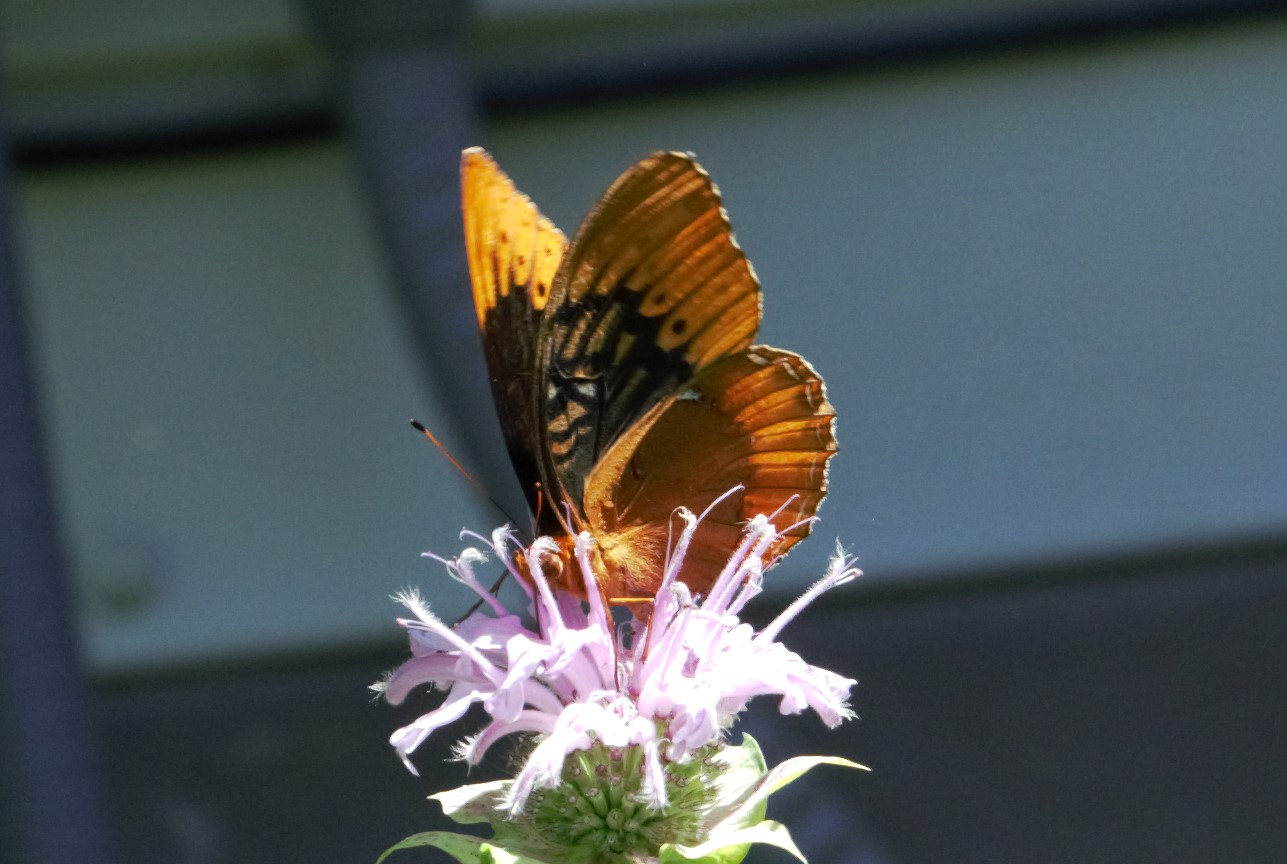Planting for pollinators this spring
Views: 1964
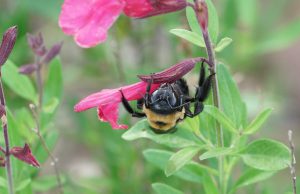
My garden is teasing spring, so it’s time to start thinking about how to help our pollinators. For many plants, pollinators play a key role in reproduction, and agriculture relies on them heavily. Without pollinators, we’d lose much of our food, and entire ecosystems would collapse. Today’s blog will provide four pollinator-friendly plants that can be started from seed. I’ll also provide a resource that may prove invaluable in determining what will and won’t grow in your region. This includes a list of beneficial, commercially-available plants that will grow almost anywhere. Finally, I recommend two books that will help you identify and understand the pollinators you may encounter in your gardens.
Globally, insect populations are in decline, and the pollinators we love, such as bees and butterflies, are no exception. The reasons for the decline are complex and range from use of pesticides to loss of habitat.
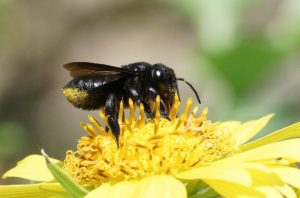
For complex reasons, pollinators are declining globally. Gardeners can help by reducing the use of insecticides and planting pollinator-friendly plants.
What can we do?
The news isn’t all bad, however. Eastern monarch butterflies had a good year last year, according to counts taken in Mexico this winter. (Unfortunately, western monarchs had a disastrous year in California.) It’s hard to attribute the slight rebound in eastern monarchs to any single cause. However, the effort of many, many gardeners across the country to plant native milkweed and beneficial plants almost certainly helped. If you contributed, pat yourself on the back. It’s worth celebrating having these beautiful creatures flying through our yards and gardens for another year. But there is always more we can do.
Bees, flies, wasps, beetles, and other butterflies also need our help. Planting a variety of beneficial native plants can help these pollinators, too.
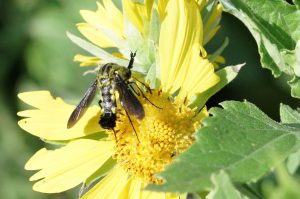
Pollinators such as this hunchback bee fly tend to prefer natives like this cowpen daisy.
Natives
Why natives, you ask? Unfortunately, when plants are cultivated or bred for specific traits, sometimes they lose their benefits to pollinators. For example, they offer less nectar or pollen than their native counterparts. While many cultivars are still beneficial to pollinators, go true native when you can.
Sometimes that means starting from seed because it may be difficult to find some of the best pollinator-friendly natives in commercial outlets. We can at least avoid their highly altered cultivars. Two seed sources I have used with success are Native American Seed and American Meadows. If you have regional companies that offer native seeds from flowers that are grown and harvested in your area, that may be a great source, as well. My experimental attempt at shopping for seeds on Amazon.com resulted in precisely no germination, so that may serve as a cautionary tale for others considering doing the same.
Here are four pollinator-friendly natives available from seed:
- Purple prairie clover (Dalea purpurea) – Not a true clover, this plant is native to most of the U.S. east of the Rocky Mountains. Purple prairie clover is the host plant for Southern Dogface (Zerene cesonia) butterflies. It prefers full sun and tolerates soils that range from sandy to clay. Not for wet areas, it may be suitable for xeric plantings. Helpful to a variety of bees and butterflies.
- Wild Bergamot (Monarda fistulosa) – I wrote about wild bergamot, also known as bee balm, in a previous blog. You can go there for more details. It is native to most of North America (California and Nevada excepted), tolerates a wide range of soils, and can grow in full sun to part shade.
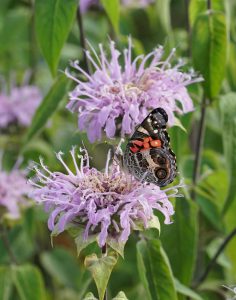
American Lady butterfly on wild bergamot.
- Black-eyed Susan (Rudbeckia hirta) – Often seen on roadsides, black-eyed Susans are native to much of the U.S. and Canada, including Alaska. They’ll do well in most soils, prefer sun to part shade, and can tolerate moderate moisture. Black-eyed Susan will reseed freely and are easy to establish in your landscape. They are a host plant for Silvery Checkerspot butterflies.
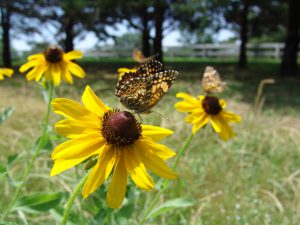
Gorgone checkerspot on black-eyed susan.
- False sunflower (Heliopsis helianthoides) – Also known as “early” or “ox-eye” sunflowers, Heliopsis helianthoides is native to the eastern two-thirds of North America. Heliopsis helianthoides is an easy-to-grow flower that is a host plant to checkerspot butterflies. A wide variety of pollinators will visit this flower, from wasps and bees to beetles, flies, and butterflies.
Of course, there are many other plants that benefit pollinators. Check out the planting guides at Pollinator.org. These free planting guides will tell you exactly what plants will do well in your eco region. Enter your zip code or Canadian three-digit postal code, and it will pull up the guide you need. They also provide a list of good pollinator plants available from big box stores and nurseries that will do well almost anywhere.
List of Good Pollinator Plants:
- Lavandula (Lavender)
- Rosemarinus officinalis (Rosemary)
- Salvia (Sage)
- Echinacea (Coneflower)
- Helianthus (Sunflower)
- Cercis (Redbud)
- Nepeta (Catnip)
- Penstemon (Penstemon)
- Stachys (Lamb’s ears)
- Verbena (Verbena)
- Phacelia (Bells or Phacelia)
- Aster (Aster)
- Rudbeckia (Black-eyed Susan)
- Origanum (Oregano)
- Achilliea millefolium (Yarrow)
Books
For two great books on pollinators themselves, I recommend author Heather Holm’s: Pollinators of Native Plants and Bees: An Identification and Native Forage Guide. The latter is an award-winning book. Both provide lots of photographs and easy-to-understand information. She really helped me understand the relationship between pollinators and plants, including the subtleties of plants’ strategies to attract pollinators (nectar, pollen, and color).
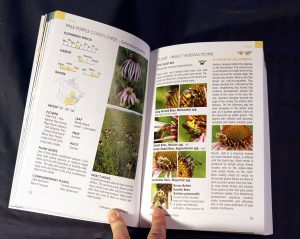
Two pages from Pollinators of Native Plants.
It is so important to help our pollinators. Hopefully, the information I’ve provided here will help you help them.
Meet Leslie Miller
Leslie Ann Miller shares 3.5 acres in rural Oklahoma with birds, butterflies and wide variety of animals. She is currently transforming her yard with plantings…
Leslie's Recent Posts
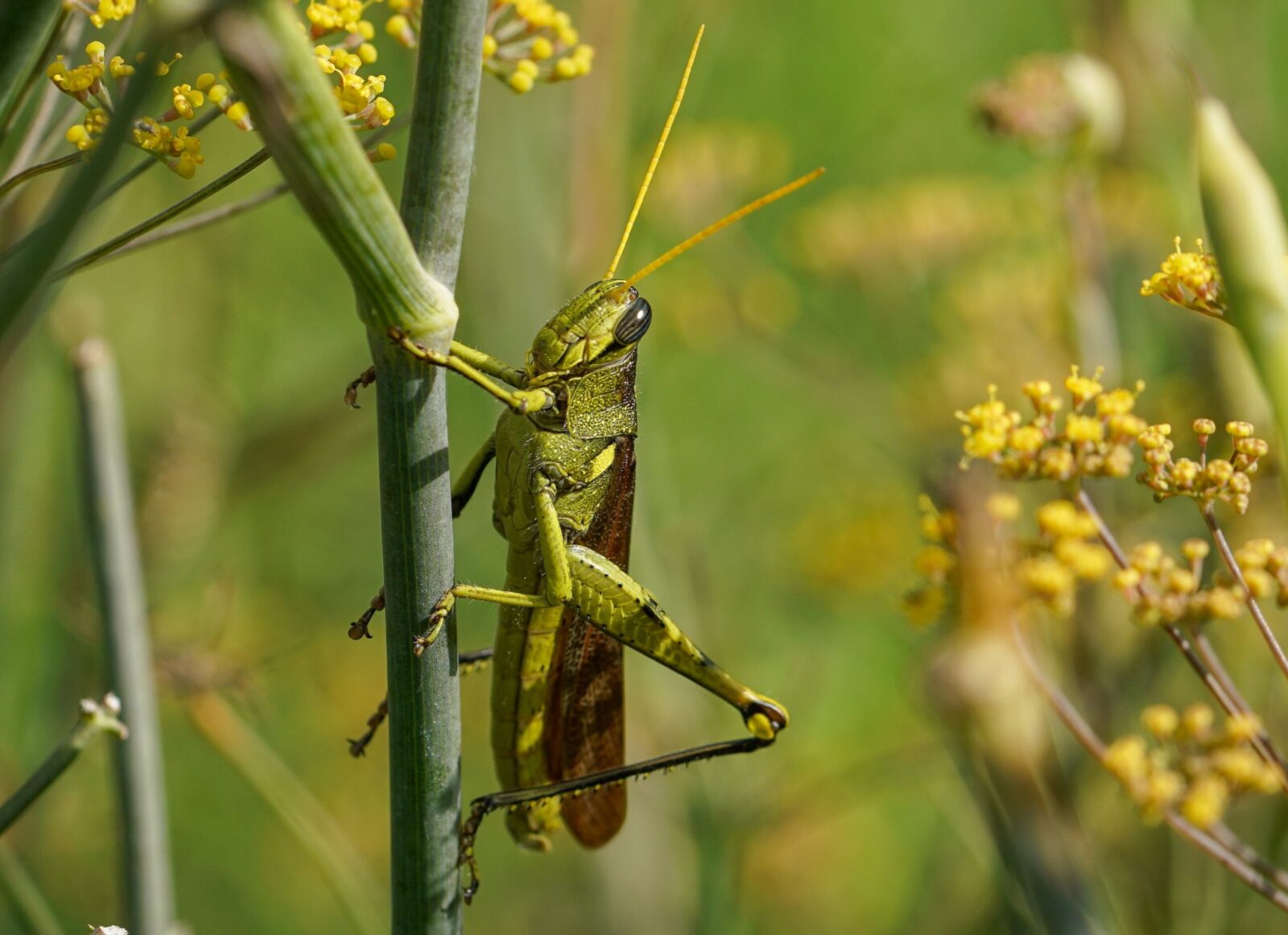
Grasshoppers and how to control them
